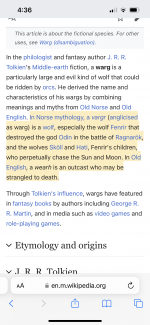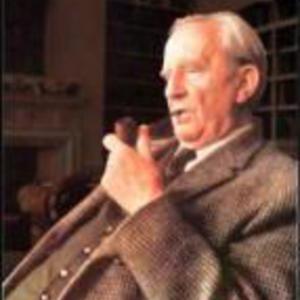You are factually incorrect. Elf before Tolkien did indeed include beautiful human people all the way down to dwarves depending on the culture and the different cultures had a shared etymology for the word coming from Aelfr/Alfr etc. the word Orc also has etymological antecedents, including as Orc, and the derivative word was Orcus, a name for Hades as lord of Hell and the word Orca, or demon. Orc itself, simple google search on this, was ferocious sea creature and orcneas was Old English for “monster”.
Encyclopedia Brittanica says Orc also is from the Italian word for Ogre… Orco.
So was it Middle English? No but Tolkien was a man obsessed with etymology and languages and he did not create the word. He appropriated it for his “monsters”. And since we’ve lost the classical education popular in his time our arrogance assumes people in that time didn’t make the connection that the word Orc indicated monster. Just like we don’t make the connection that goblin also means a type of faerie and and elf is also a type of faerie.
So...it's very frustrating that you say these things, because you're arguing against points I didn't make in several cases. If you have examples of "elf" meaning beautiful humanoids prior to Tolkien, I'd love to see them; I've never seen any myself, and have heard that from
numerous sources before. Knowing that I was wrong, and having good evidence thereof, would be useful to me.
I never said orc didn't have antecedents. In fact, I explicitly said it DID! I said it wasn't used
in Middle English. It is etymologically related to Orcus, yes, and as you say it is an
OLD English word, but not a MIDDLE or MODERN English word
before Tolkien, which is the actual argument I made. Tolkien revived a word that was essentially dead. Same with "dwimmer," a Middle English word that had essentially gone extinct by Shakespeare's time and which Tolkien used, resulting in its partial revival (Gygax favored the "dweomer" spelling.)
"Warg," on the other hand, is only attested as a (variably-spelled) borrowing of the Old Norse
vargr prior to Tolkien's use, which as I said is a blend of the Old Norse word and an Old English word (
wearh, sometimes spelled
wearg.) Its use, to mean a particularly monstrous and intelligent wolf,
really does derive from Tolkien in modern English. It's thus
extremely difficult to believe that Poul Anderson, a physicist by trade, would have re-introduced a random
Old Norse word that hadn't been used in English for hundreds of years
other than by Tolkien.
Unfortunately, I can't find any PDFs of the original magazine serial version of
Three Hearts and Three Lions, so it's hard to be absolutely sure that the word "warg" was, in fact, used there. But whatever Mr. Anderson may have said, it's
pretty hard to argue that there was no influence whatsoever from Tolkien going on. Is Tolkien the end-all, be-all of the fantasy genre's foundation? HELL no! Absolutely not! Not even
close, but his long shadow often causes others--like Mr. Anderson--to get forgotten. I don't want to contribute to that erasure. I just want to not turn "don't erase the others!" into "Tolkien really didn't make a big difference." I'm reminded of the threads we've had on here, duelling over whether Gygax is over- or under-rated in his influence on the game, and whether Arneson gets appropriate recognition or continuously short shrift.
Poul Anderson contributed enormously to what we now consider D&D, and the high fantasy genre, and does not get as much credit as he should. But I stand by the notion that, IN ADDITION to that lack of deserved credit, he ALSO was advancing and spreading key ideas already built up--quite recently--by other authors, and Tolkien was foremost among those authors.




